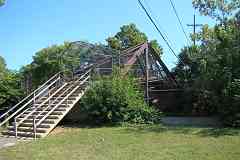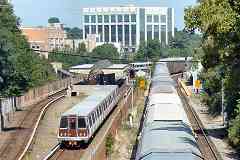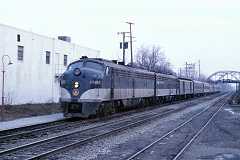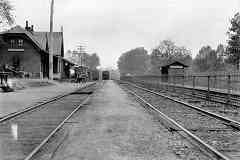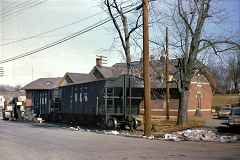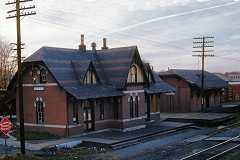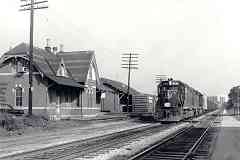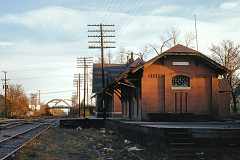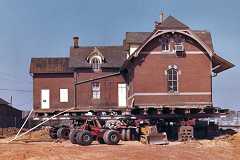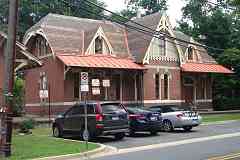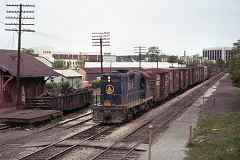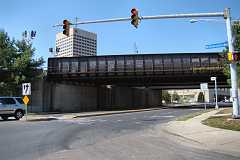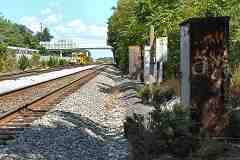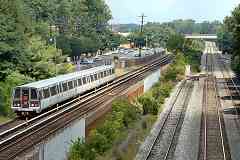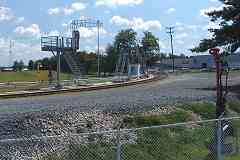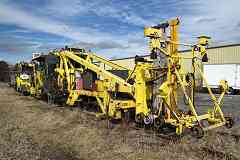|
Until about 1980, the railroad would leave loaded coal hoppers behind the station
for local end users. Here, coal is being transferred onto a Wire Hardware truck
for delivery. Wire Hardware was across Church Street from the station, off photo
left; its building has been restored by the Peerless Rockville historic
preservation group.
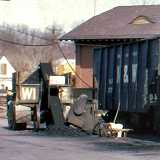 This photo introduces several unanswered questions. I am told the rusty, bulky
device between the truck and railcar operated conveyors that carried the coal from
under the railcar up into the truck. There are about 100 tons of coal in the two
hoppers; was Wire the only organization delivering it? How long did these
railcars sit for emptying? Most railroads charged demurrage (an extra fee)
if a car stayed longer than two days.
This photo introduces several unanswered questions. I am told the rusty, bulky
device between the truck and railcar operated conveyors that carried the coal from
under the railcar up into the truck. There are about 100 tons of coal in the two
hoppers; was Wire the only organization delivering it? How long did these
railcars sit for emptying? Most railroads charged demurrage (an extra fee)
if a car stayed longer than two days.
Burning coal has a petroleum-like odor, some say similar to diesel exhaust or raw
gasoline. What about pricing? Comparing past and current prices of coal is a
challenge because pricing varies by coal grade, delivery method, contract size, currency
inflation, etc. Anthracite type is preferred because it packs more energy per unit
weight than other types like bituminous. Data from year 1900 suggest 100 pounds of
bagged coal for home use cost about 25 cents, plus a 10 cent deliveryman tip. By
photo time, that price was $1 to $2, or about $15 in year 2020 dollars. A one-time
purchase of 100 pounds cost about $100 via Amazon as of 2022. The average US home
would need about 32 such bags (3200 pounds) annually for heating. Bulk coal for
electricity generation, usually bituminous and lignite, is much cheaper, and as of
2020 cost power plants about $2 per hundred pounds when delivered by the trainload.
Link:
Wire Hardware
|
